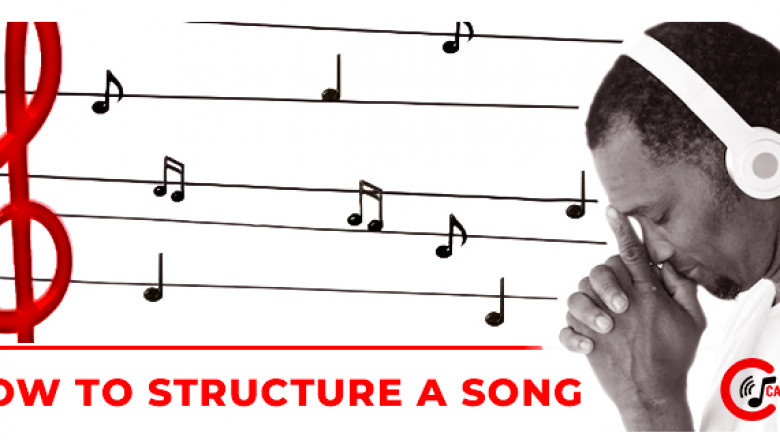views

Songs are one of the oldest expressions of self-expression in human history. Scientists recently discovered a "music center" in our brain, which causes us to react to music in the same way we do to other pleasurable stimuli. Songs make us feel through rhythm and melody, but they also stay with us because of the regular patterns that make up song structure.
What Exactly Is Song Structure?
Song structure refers to how a song recording is organized through the use of various sections. A common song structure has a verse, chorus, bridge, and outro in the following order: intro, verse — chorus — verse — chorus — bridge — chorus — outro. This is known as an ABABCB structure, with A representing the verse, B representing the chorus, and C representing the bridge.
Hit songs and pop songs typically adhere to the usual format, but jam bands and experimental musicians may deviate from the norm. If we know a song when we hear it for the first time, it is because our ears have been trained to recognize the most regularly used song structures. But that isn't to suggest that there isn't value invariance.
What Constitutes a Song?
A song is made up of six major components: -
Intro - A song introduction, like the beginning of a film or story, should pique the listener's interest. It should, however, do so without overwhelming them. As a result, song intros are often slower and more understated.
The purpose is to establish the song's rhythm, speed, and melody while also introducing the vocalist or singers' voices.
Verse - A song's verse is an opportunity to convey a story. Lyrically, this is where the plot genuinely develops and progresses. In most songs, the chorus and pre-chorus repeat the same lyrics, thus the verse is your chance to convey your point. It may be useful to divide the story you wish to convey into two verses and consider how the second verse can build on the first. Some songwriters utilize the second verse to alter or subvert the meaning of the chorus, or even the entire song with alternate lyrics.
It's an opportunity to be creative and explore the many feelings you're attempting to elicit in your listener.
Pre-chorus - Although not required, a pre-chorus enhances the impact of the chorus. A pre-chorus frequently includes a chord progression from the verse or chorus, building on that familiarity. It's another opportunity to experiment—the pre-chorus, for example, can use new harmonies or break the song's structure.
Chorus - The chorus is the culmination of all of your song's major concepts. This is why the song's title is frequently included in the chorus. It's a synopsis of the full song's content. The hook—the catchiest section of the song—is usually found in the chorus. Choruses should act as the song's climax.
Because the verses and pre-chorus both help to build up to this one point, the chorus should represent that release of tension.
Bridge - The bridge is usually only heard once near the end of a song’s recording, usually between the second and third chorus. It's a refreshing change of pace in the song composition, both lyrically and musically. The goal of music production is to startle the listener out of her trance and remind her that this song is more than just repetition. This can be accomplished by switching to a relative key in the same key signature (for example, from A-Minor to C-Major) or by playing a guitar solo.
Outro - The song has come to an end. The outro should clearly indicate to the listener that the song is coming to a conclusion. This can be accomplished in a variety of ways, but the most common is to reverse the intro—that is, to slow down. Most of the time, the outro is a repeat of the chorus with a gentle fade-out.
What Are the Most Frequently Used Song Structures?
There's a reason pop songs all have the same framework when it comes to songwriting. For decades, composers of many genres have relied on this tried-and-true technique. Something about these frequent song forms strikes a chord with listeners and keeps them coming back for more.
1. The abbreviation AABA (32-bar-form). Beginning with Tin Pan Alley pop greats like Bing Crosby and Cole Porter in the first half of the twentieth century, this melodic arrangement was prominent in American popular composition. The form is made up of two eight-bar A sections, an eight-bar B section (typically in harmony with the first two A sections), and a final eight-bar A section that keeps the basic melody from the previous A sections. In the 1950s and 1960s, the 32-bar form was popular in rock songs before being surpassed by the verse-chorus form.
2. ABABCB. Verse/Chorus/Verse/Chorus/Verse/Chorus/Verse/Chorus/Verse/Chorus/Verse/Chorus/Verse/Chorus/ With the inclusion of a bridge, this is a variant on the verse-chorus structure. A represents the verse, B represents the chorus, and C represents the bridge.
What Are Common Song Structure Variations?
There are exceptions to the rule, as with any artistic form. These successful variants have worked for a wide range of musical artists from various eras and genres.
There is no chorus.
AABA is an abbreviation for Verse / Verse / Bridge / Verse.
One of the most important aspects of a song, the chorus, is missing in this form of song structure. To compensate, each verse usually opens or finishes with a refrain: a line or a few lines that recur throughout the song. (This is usually the song's title.) This song structure is used by musicians such as Billy Joel and The Beatles. The refrain is the song title of The Beatles' "We Can Work It Out" (1965).
No bridge.
AAA instead of Verse / Verse / Verse
Because it requires so much repetition, this structure is rarely employed. This form, like the AABA structure, relies on the employment of a refrain to keep things fresh and to help give the song focus. Bob Dylan's "Tangled Up in Blue" is a well-known example of this structure (1975). Dylan uses numerous melody variants in the verses to avoid getting too repetitive.
Songwriting is an exercise in creativity: first, understand the fundamentals of typical song structures, then build on the ABABCB to create your own sound.
Many song recordings fail to follow this structure and that leads to an unappealing song.
Blog Source URL: https://www.carryatune.in/how-to-structure-a-song












